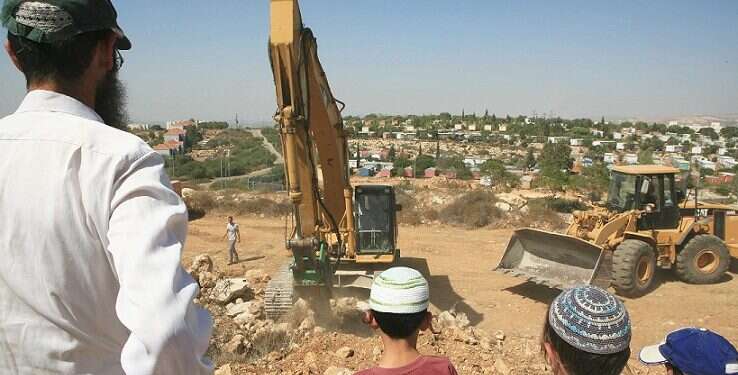Despite announcements by the government throughout 2017 that housing construction in Judea and Samaria was on the verge of a boom, the Jewish population growth rate in the area is actually falling, in contrast to most other areas of Israel, according to data obtained by Israel Hayom.
The figures show that the growth rate in Judea and Samaria dropped from 3.9% in 2016 to 3.4% in 2017.
The Yesha Council of Jewish Communities in Judea and Samaria says the de facto construction freeze is the cause for the decline. Earlier this month, Israel Hayom reported that due to a personnel shortage in the Planning and Construction bureau of the IDF's Civil Administration, nearly half of the thousands of planned housing units slated for final approval, sale, and construction in 2017 have become stuck in the final stages.
Yesha Council chairman Hananel Dorani wrote to Prime Minister Benjamin Netanyahu recently urging him to resolve the problem by creating more planning department positions.
In December, Israel Hayom reported that almost none of the greelighted housing units had been put up for advance sale (a step often used by contractors to finance the construction), with the result that during 2017, construction began on only a few dozen new housing units in Judea and Samaria.
At the beginning of 2018, the total population of Judea, Samaria, and the Jordan Valley stood at 435,708, spread across some 150 communities.
In the decade from 2006 to 2016, the settler population had an average annual growth rate of 4.6%, or 15,230 new residents per year. In 2016, the rate dropped to 3.9%, the first time in a decade the rate dipped below 4%. In 2017, the growth rate fell still further, to 3.4%, or 14,299 new residents.
The settlement community with the largest growth for 2017 was Alei Zahav, just over the Green Line east of Rosh Haayin, which grew by 24.5%. Kibbutz Beit Arava, near the Dead Sea, grew by 20.2%. The populations of Negohot in the Hebron Hills and Moshav Naama in the Jordan Valley grew by 13.4% and 12.9% respectively.
The settlement population is younger on average than the rest of the country: 47% of settlers are under 18, compared to 27% nationally. The figures also show that the total population of Judea, Samaria, and the Jordan Valley is almost evenly split between secular, national religious, and ultra-Othodox residents.
The Yesha Council expressed mixed emotions about the falling settlement growth rate figures, which are still higher than the national average growth rate across Israel of 2% per year.
"While last year, there were more housing units that cleared all the government hurdles and should have been built, we are still seeing a 'silent freeze.' The vast majority of housing units that were supposed to have been constructed are running into difficulties that are the result of a lack of manpower, which creates bottlenecks in the planning department and in the preparation of sale tenders [for the housing], making it difficult to carry out the plans," the council said.
"The slowdown in growth stems from years of planning freezes and lack of construction. The government needs to take action to remove the obstacles to construction and increase the available housing, which will lower the prices of apartments in Jerusalem and central Israel and restore the growth rate to the levels we saw in the past."




